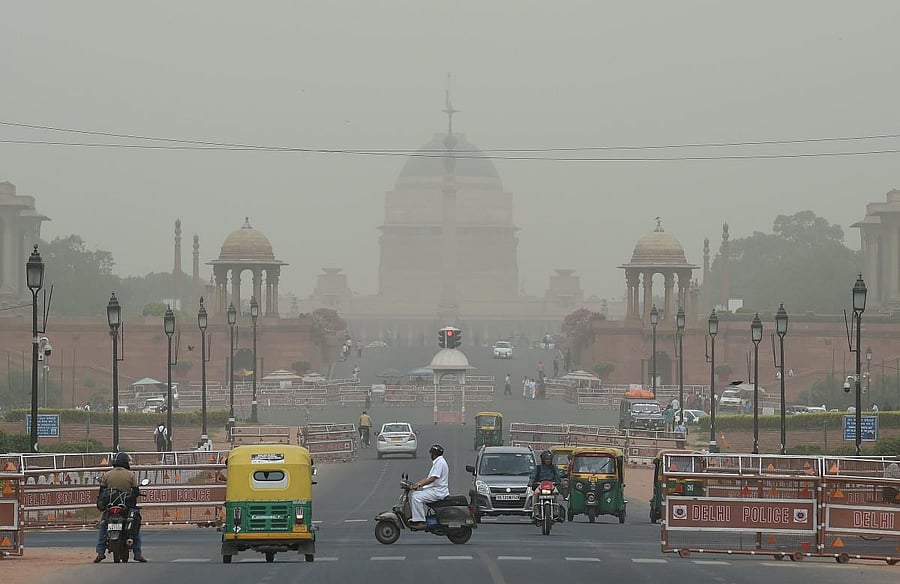An analysis of the Global Burden of Disease study shows that a child dies in India every three minutes because of inhaling toxic pollutants in air. As many as 1.95 lakh children lost their lives due to pollution-related diseases in 2017.
Fourteen Indian cities feature in a list of 20 of the world’s most polluted cities. Even smaller Indian cities such as Kanpur, Agra, Gaya and Varanasi make an appearance. India’s dreadful particulate matter pollution shortens the average life expectancy of an Indian by more than four years. For a resident of Delhi, life expectancy can be upped by 10.2 years if the WHO guidelines on air quality are met.
This is a health emergency. It is evident that air pollution has emerged as the most hazardous threat to the health of Indians, especially children whose underdeveloped lungs put them at severe risk of respiratory disorders.
Gas chamber
Contrary to popular belief, exposure to polluted air is not only associated with respiratory disorders but also increases the possibility of cardiovascular diseases, neuropsychiatric complications, skin diseases and cancer. Air pollution is also a risk factor in the incidence and progression of diseases such as asthma, lung cancer, autism, Alzheimer’s and Parkinson’s diseases. In short, air is the new tobacco.
A study conducted by international researchers estimated that air pollution was responsible for about 10,000 to 30,000 deaths in Delhi every year, mostly from heart attacks and strokes.
Another research by Delhi-based CSIR-National Physical Laboratory (NPL) found that aerosol pollution over Delhi atmosphere might be contributing to a severe vitamin D deficiency.
The China example
In 2013, China witnessed its worst smog. Realising the consequence, China evolved a strategy to fight pollution and put forth some radical measures including a nationwide cap on coal use. During the Olympic games, Beijing also implemented a strict odd-even scheme. The impact of these measures has been positive.
A study by Greenpeace East Asia found that concentrations of smallest particulate matter (PM 2.5) were 54% lower during the fourth quarter of 2017 than during the corresponding period in 2016. Interestingly, in Xian city of the Shaanxi province, a 100-metre-high air purification tower helps improve the air quality. China’s example shows that a strong political will can improve air quality in a relatively short time.
In the shared public psyche, air pollution is more of a nuisance than a health hazard. Much like health advocacy against tobacco, large scale awareness drives to educate people about air pollution are necessary. This will enable people to take preventive measures such as installing air purifying devices in homes and cars, and planting purifying plants in their vicinity.
Putting the entire blame on government policies is futile and hypocritical. This emergency requires equal effort from the individuals. As individuals, we must endeavour to cut our carbon footprint. Cutting down on the use of private vehicles for short distances in favour of walking or cycling, using public transport more often and resorting to carpooling are measures we can adopt.
The good news is that we are shifting towards a blanket adoption of Bharat Stage VI (BS VI) norms with the Supreme Court declaring an April 1, 2020 deadline for the same. BS VI norms can bring the particulate matter in diesel-powered cars down by a whopping 80%, reduce nitrogen oxides by 70%, and bring down PM levels by 25% in petrol-powered cars. However, we need to implement more measures to shift to clean alternative fuels. Phasing out diesel and petrol cars must be a medium-term target. Shifting to gaseous fuels on a large scale is necessary for the short term, as electric vehicles have a long gestation period.
There are interesting examples across the world on how progressive governments helped push commuters towards clean transport options by rewarding and incentivising them. France, Belgium and Luxembourg are paying their citizens for cycling to work. Measures such as cycling reimbursement, income tax breaks for buying bikes or mobility vouchers have influenced citizens in these countries to abandon private vehicles in favour of bicycles. Similarly, Scotland offers interest-free loans to buyers of electric cars. Indian cities can do well to learn from some of these examples to bring about change in consumer behaviour.
(The author is the Managing Director of Paras Healthcare)
